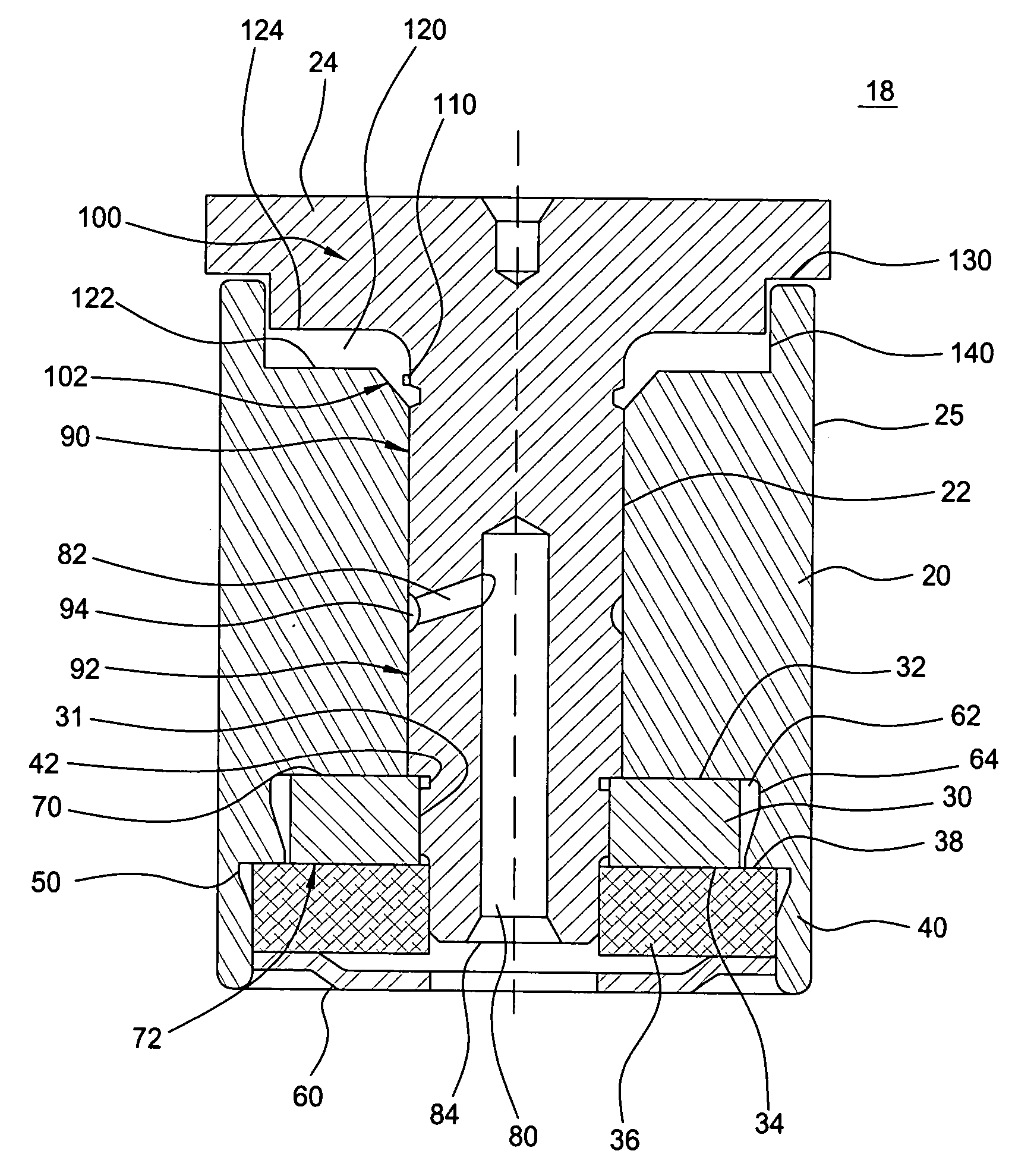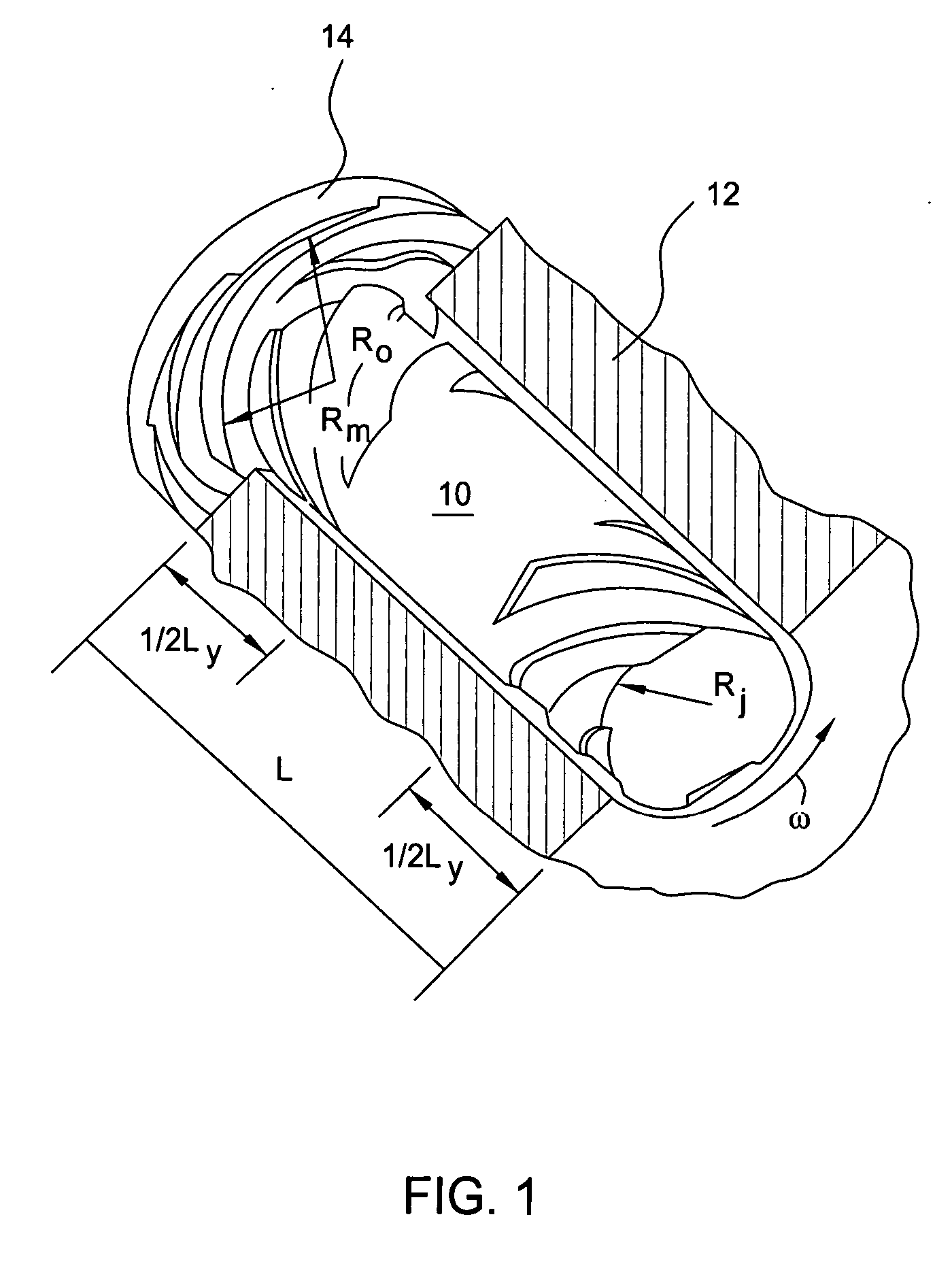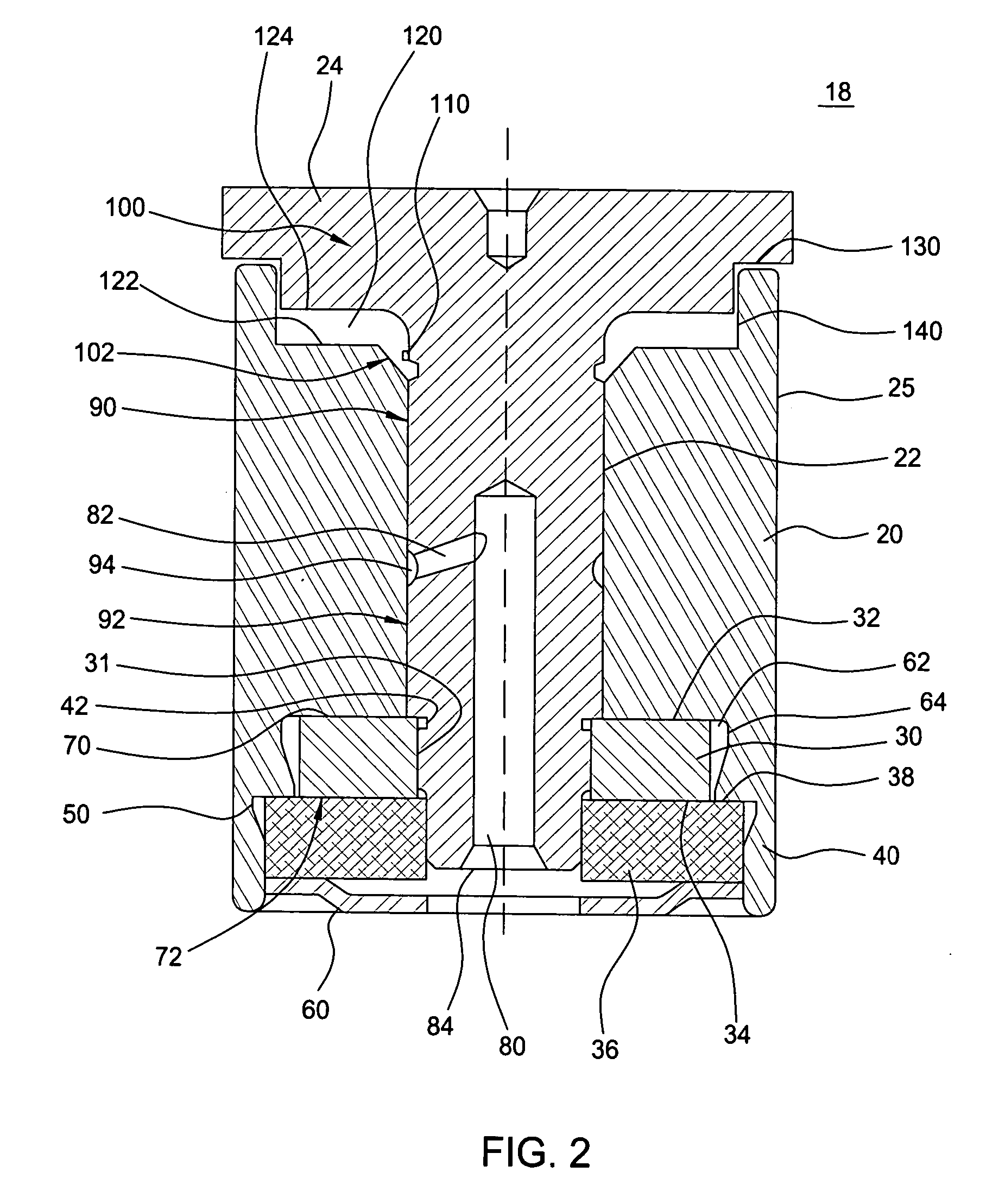Single plate hydrodynamic bearing cartridge
a technology of hydrodynamic bearings and cartridges, applied in the direction of bearings, shafts and bearings, rotary bearings, etc., can solve the problems of prone to several shortcomings of the conventional bearing system described above, physical contact between raceways and balls, and vibration generated, etc., to achieve reliable, repeatable design, and simple design. , the effect of high adaptability and scalable us
- Summary
- Abstract
- Description
- Claims
- Application Information
AI Technical Summary
Benefits of technology
Problems solved by technology
Method used
Image
Examples
Embodiment Construction
[0020] The basic principles of the present invention are derived from hydrodynamic bearings as already known in the technology, an example of which is shown in FIG. 1. As shown in this figure, a journal bearing includes a shaft 10 which is rotating relative to a bushing or a sleeve 12, with one of the opposing two surfaces (in this case the shaft closed) carrying cylindrical sections of spiral grooves. A thrust plate 14 may also be provided at or near one end of the shaft 10 carrying concentric spiral groove sections either on the plate itself or on the sleeve surface that it faces. Relative rotation of the shaft churns and pumps the fluid as a function of the direction, width, and angle of the grooves with respect to the sense of rotation. The pumping action builds up multiple pressure zones along the journal and the thrust plates, maintaining a fluid film between the rotating parts and providing the desired stiffness for the bearing.
[0021]FIG. 2 is a first example of a hydrodynam...
PUM
 Login to View More
Login to View More Abstract
Description
Claims
Application Information
 Login to View More
Login to View More - R&D
- Intellectual Property
- Life Sciences
- Materials
- Tech Scout
- Unparalleled Data Quality
- Higher Quality Content
- 60% Fewer Hallucinations
Browse by: Latest US Patents, China's latest patents, Technical Efficacy Thesaurus, Application Domain, Technology Topic, Popular Technical Reports.
© 2025 PatSnap. All rights reserved.Legal|Privacy policy|Modern Slavery Act Transparency Statement|Sitemap|About US| Contact US: help@patsnap.com



